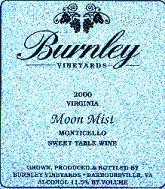 |
|
Wine Details
Price:
$12.00 per bottle
Description:
This is a sweet wine made with Muscat Blanc and Orange Muscat. The wine is fermented dry and Muscat grape juice is added back to enhance the fruit flavors and add natural sweetness to the wine. Best served well chilled. Goes well with a sweet but tart dessert. 6% residual sugar.
|
|
|